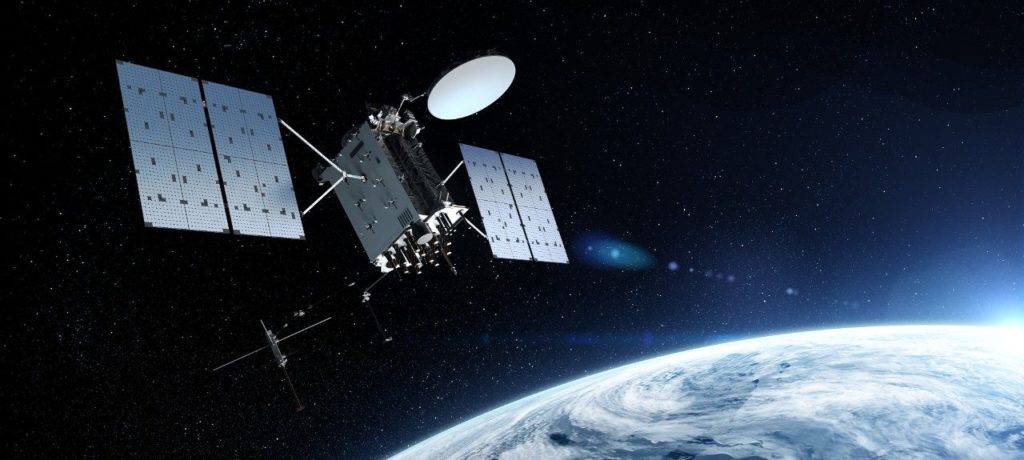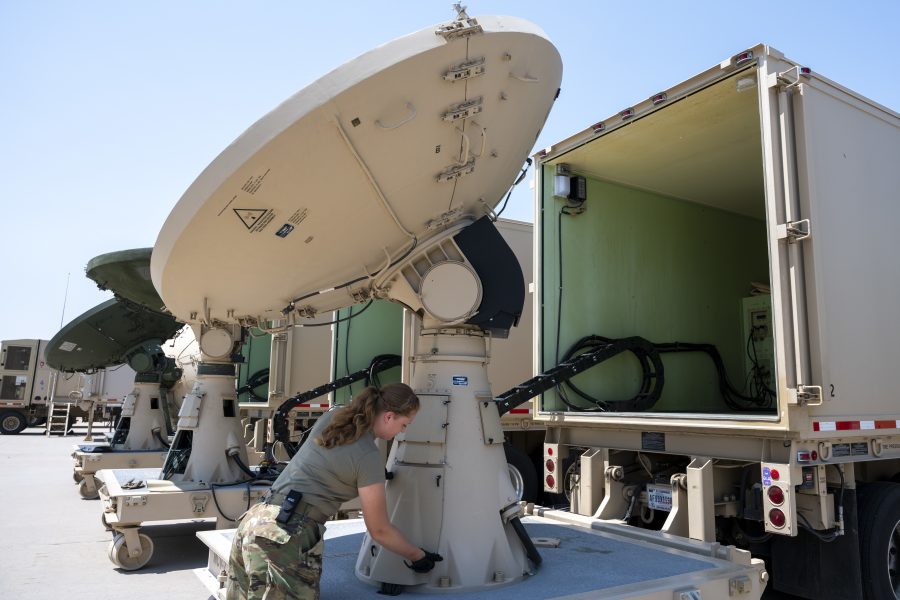A draft version of the 2025 National Defense Authorization Act would allow the Department of the Air Force to transfer Air National Guard units with space missions into the Space Force—but the language is not without compromise in light of the fierce pushback the proposal has faced in recent weeks.
In his chairman’s mark of the defense policy bill, House Armed Services Committee leader Rep. Mike Rogers (R-Ala.) largely adopts the language proposed by the Air Force, which would fold all Guard units with space missions into the Space Force’s new hybrid full-time/part-time structure.
The bill does, however, differ from the Air Force proposal in a few ways:
- It limits the number of personnel that could be transferred to “not more than 580 members of the Air National Guard.”
- If any service member prefers to stay in the Guard, the bill would require the Air Force to provide retraining and reassignment to a different ANG job, instead of merely allowing it as laid out in the Air Force proposal.
- The Space Force will be required to continue performing the mission of any transferred unit in the state where it currently resides, with the bill eliminating a provision of the legislative proposal that would have allowed the Air Force to move missions after it has informed and justified the move to Congress.
It remains to be seen whether these changes will be enough to stem the tide of criticism levied at the Air Force proposal—the National Guard Association of the United States, the governors from every state and territory, and 85 members of Congress have expressed opposition to the idea.
These critics have argued that the move would defy precedent and undermine governors’ authority over their National Guards and go against the wishes of Guardsmen, with internal surveys showing a majority do not want to transfer to the Space Force.
Air Force Secretary Frank Kendall has insisted such fears are overblown, saying the number of affected personnel would be small and the Space Force will not force personnel to move. He and Chief of Space Operations Gen. B. Chance Saltzman say the switch will provide more flexibility for the service and allow Guardians to move between full-time and part-time status.
A recently released Air Force analysis found that only nine ANG units would move to the Space Force, with 578 full-time and part-time billets. Those numbers are lower than what Space National Guard advocates have cited—the report says that Airmen who perform support functions would stay in the ANG no matter what.
POLITICO previously reported that Rogers, who supports the Air Force proposal, said, “unless it becomes apparent to me that it’s not going anywhere, it will be in [the NDAA] and then somebody can just try to take it out” during the House Armed Services Committee markup process.
Spokespeople for Reps. Jason Crow (D-Colo.) and Joe Wilson (R-S.C.), who helped spearhead a letter from lawmakers criticizing the Air Force proposal, could not immediately offer a comment.
Even if the proposal makes it through the HASC markup process, it still must survive an amendment process in the full House and a negotiation with the Senate to make it into law.
Commercial Space
In the strategic forces subcommittee mark of the NDAA, there are three sections aimed at bolstering the Space Force’s relationship with commercial space companies.
The first would formally establish a Commercial Augmentation Space Reserve (CASR)—essentially a space version of the Air Force’s Civil Reserve Airlift Fleet, allowing the Space Force to use commercial satellites in times of crisis or conflict.
The exact nature of when the CASR could be called upon is left up to the Secretary of Defense, but the program’s establishment is likely to play a key role in the Space Force’s broader plans to work with the growing private sector in space. The service released its Commercial Space Strategy in April, and lawmakers included another provision in the draft NDAA encouraging the Space Force to expand the number of mission areas where it integrates commercial capabilities and requiring a yearly briefing on the strategy through 2029.
Finally, the draft NDAA proposes the creation of a pilot program of a “hybrid space architecture” for satellite communications—connecting military communications satellites with commercial ones across different orbits to improve resiliency. The bill includes $2 million for the demonstration.

Budget Moves
With the Space Force budget facing its first-ever reduction in 2025 after several years of rapid growth, the draft NDAA proposes cuts in authorized spending for research and development and procurement.
On the R&D side, the big cut is a $139 million reduction for classified programs. For procurement, the single big cut is to the GPS III Follow-On program, with a proposed drop from $647.2 million to $332.6 million.
In an accompanying explanation, lawmakers wrote that the reduction would eliminate one of the two proposed GPS IIIF satellites the Space Force wants to buy in 2025, because “the committee is concerned about the delays to launch currently available space vehicles and that the procurement funding is out of sync with the cadence of launch.”
The explanation also notes that the Space Force is exploring ideas for “building smaller, less expensive GPS space vehicles to augment the current architecture and provide distributed resiliency,” an initiative dubbed GPS Lite. Lawmakers expressed enthusiasm for the idea and are asking for a briefing with more details.
